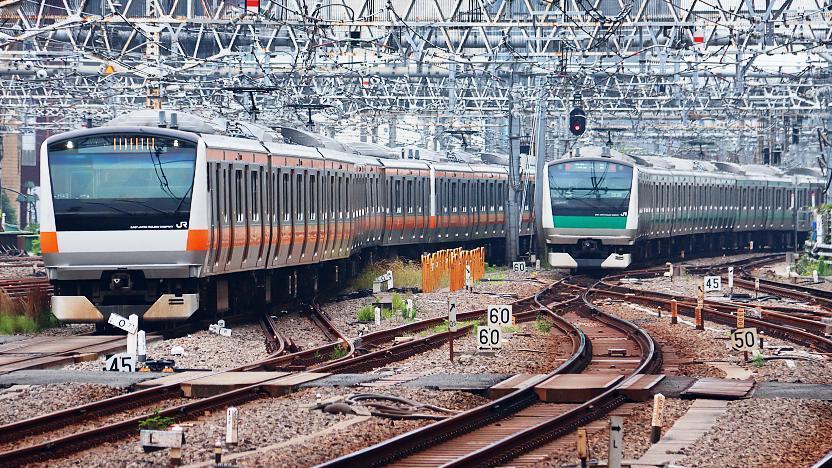| From Wikipedia |
If you’ve ever traveled through Japan, you know its rail system feels nothing short of miraculous — punctual, extensive, and incredibly efficient. But what really fascinates me isn’t just the service; it’s how this system was built. As someone who’s looked closely at transport policy, I see Japan’s rail landscape as a masterclass in structured market design. So today, I want to walk you through how Japan’s government carved out the roles for private rail companies and made this system thrive.
It Started with Breaking Up a Giant
Back in 1987, Japan faced a huge problem: its national rail system, Japanese National Railways (JNR), was drowning in debt and inefficiency. Rather than simply selling it off as one private monopoly, the government did something far smarter — it split JNR into distinct, manageable pieces. This wasn’t just privatization; it was careful market sculpting.
Here’s how they did it:
First, they divided the country by region. They created six passenger companies — JR Hokkaido, JR East, JR Central, JR West, JR Shikoku, and JR Kyushu. Each was given a geographic territory, effectively creating regional monopolies. This prevented any single company from dominating the entire country and allowed each to focus on the unique needs of their area.
But they didn’t stop there. They also separated freight from passenger services, forming JR Freight. This company doesn’t own most of the tracks—it pays to use the lines owned by the other JRs. This forced JR Freight to become hyper-efficient and focused.
What impressed me most was how the government handled debt. The three profitable companies — JR East, JR Central, and JR West — were set up for quick success and full privatization. The others, especially JR Hokkaido and JR Shikoku, were given more support because their networks included vital but unprofitable rural lines. The state knew that leaving them entirely to the market would mean service cuts and isolation for smaller communities.
The Private Railways Were Already Giants — Here’s How Government Empowered Them
 |
| From Japan Living Guide |
What many people don’t realize is that some of Japan’s best-known rail operators—like Tokyu, Keisei, Odakyu, or Hankyu — were already private giants long before JNR was broken up. The government’s role here wasn’t to create them from scratch, but to regulate, incentivize, and strategically empower them.
My favorite part of this story is the business model the government encouraged: railways weren’t just about trains. Companies were allowed — even encouraged — to diversify into real estate, retail, and entertainment. Think about it: a company like Tobu or Keikyu would build a railway line out into the countryside, buy up the cheap land alongside it, and then develop that land into suburbs, shopping malls, and resorts. Suddenly, the railway wasn’t just a service—it was the heartbeat of a integrated lifestyle ecosystem.
The government carved out the market by granting these companies exclusive regional franchises. They didn’t allow cut-throat competition on the same corridor. In return, the private operators invested their own money into building and maintaining infrastructure — effectively financing public mobility through private innovation.
And it worked brilliantly. These companies didn’t just operate trains — they built cities.
When the Market Failed, the Government Stepped In
 |
| From Japan-Guide.com |
Of course, not every line can be profitable. In rural areas and remote islands, rail service is essential but economically unviable. This is where Japan’s government showed its nuance.
They created something called “Third Sector Railways” — companies jointly funded by local governments and private entities to operate lines that JR or private operators couldn’t sustain alone. In many cases, the state also provides direct subsidies to operators like JR Hokkaido to maintain socially necessary services.
It’s a clear-eyed approach: let competition and innovation flourish where there’s demand, and provide public support where it’s needed.
What I Think We Can Learn from This
Reflecting on all this, a few things stand out to me:
- Japan didn’t just privatize — it structured. The market was deliberately carved to balance competition with service obligation.
- The government acted as a regulator and enabler, not just an owner or a bystander. They set the rules, ensured fairness, and filled gaps where needed.
- The integration of rail with real estate wasn’t an accident — it was policy. And it turned railways into profitable, sustainable businesses.
So the next time you’re on a sleek train in Japan, remember—you’re not just experiencing great engineering. You’re seeing the result of one of the most sophisticated market designs in modern transportation history.
And honestly? I think the world still has a lot to learn from it.
Disclaimer: The author used DeepSeek for research and development assistance in the creation of this blog post. The core ideas and personal experiences are the author's own.
No comments:
Post a Comment